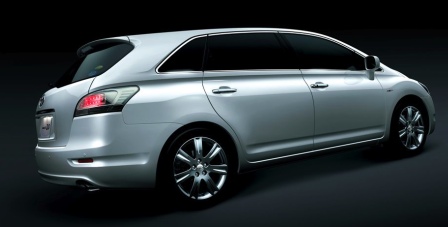Ford received a small bit of good news recently – sales of its Focus compact car (pictured above) were up 24 percent for the month of March 2008. Honda saw sales of its Fit subcompact increase as well, by more than 73 percent. Sales of the Nissan Altima and Honda Civic also were up, by 14 percent and 10 percent, respectively.
Those were among the few bright spots in auto sales over the past few months. Sales of trucks and SUVs tanked, as car buyers continued to migrate away from larger vehicles to smaller, more fuel-efficient sedans and coupes. It’s easy to understand why, with gas prices soaring into the stratosphere. And it naturally leaves some automakers (such as Honda and Toyota) in better positions than others.
This shift in car-buying patterns has automakers scrambling to rejigger their fleets, and some are doing that more successfully than others. Ford, for instance, actually posted a profit for the first quarter of 2008 (due in part to the fact that the company has trimmed its workforce substantially and has plans to shut down some shifts at truck plants). And all automakers are eyeing smaller, more efficient cars.

Ford, for instance, has plans to expand its fleet of small cars in 2009 with the addition of the new Fiesta, which Ford calls its first “global” small car. Recently unveiled at the Geneva Auto Show, the Fiesta will be powered by a range of fuel-efficient engines and bring “big car features to the small car segment,” according to Ford.
That’s a trend we’ll be seeing more of in the years to come, as automakers add luxury-oriented features like innovative sound systems to their smaller cars in an effort to attract new buyers. For instance, Ford has added its new Sync feature to some Focus trims, and upcoming trims of the Chevy Cobalt are expected to come equipped with audio systems that include USB ports, so drivers can plug portable thumb drives into their car stereos, adding a new functionality that will make it easier for drivers to take their favorite songs with them wherever they go.

Don’t expect automakers to completely abandon SUVs, but you can expect SUVs to become smaller and more efficient. Audi, for instance, just unveiled its new Q5 SUV at the Beijing Auto Show (although to us it looks more like a crossover vehicle or a hunky wagon than an SUV). Powered by a range of fuel-efficient engines and featuring permanent all-wheel-drive, the Q5 will measure about 15 feet long, 6 feet wide, and 5.4 feet high, giving it a smaller overall footprint than many other SUVs. Audi calls it “an SUV of all-new proportions,” and notes that it will be “sportier than any of its competitors.” Whether it will prove a hit with buyers seeking smaller, fuel-efficient vehicles remains to be seen, but it’s certainly a step in the right direction.
 Although they made their official world debut at the Geneva International Motor Show earlier in March, the MINI John Cooper Works Hardtop and MINI John Cooper Works Clubman took their U.S. bows on Thursday, March 20th at the
Although they made their official world debut at the Geneva International Motor Show earlier in March, the MINI John Cooper Works Hardtop and MINI John Cooper Works Clubman took their U.S. bows on Thursday, March 20th at the 


